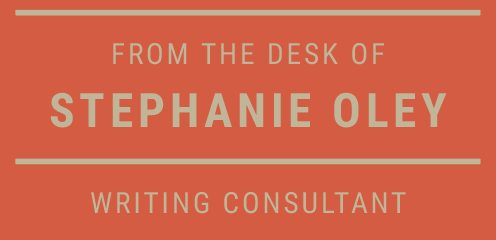It’s been almost three years since the release of ChatGPT. Yet for many Australian professionals, the use of this and other artificial intelligence (AI) writing tools remains unofficial and not mandated by work.
An estimated 50% of Australian workers report using AI writing tools unofficially, according to KPMG. However, Industry Australia notes that fewer than a third of workplaces have given their people the green light to use these tools, let alone clear guidelines or policies advising on cautions or best practice.
Using AI is often relegated to a dirty secret. ‘Look at all those em dashes and Oxford commas – it’s clear he used AI.’ ‘Her proposal was so shallow and jargon-filled. Obviously ChatGPT.’
However, rather than seeing AI as a shortcut or threat, professionals should treat it as a thinking partner – one that enhances but doesn’t replace your writing skills and business judgment
All this is prompting me to refresh my material as a business writing consultant. Do the old models of writing form still apply? What about subject-matter expertise? Can you rely on a bot to improve your grammar? Before I answer those questions, some high-level thoughts.
How NOT to use AI
Used too broadly or at the wrong phase of the writing process, AI can be more of a liability than a help.
After all, to paraphrase Stephen Dubner from a 2023 Freakonomics episode: ‘AI’s output is like a B-minus student.’ So unless you’re writing in an area you lack confidence, your current skillset is already better than what the AI produces. I guarantee it.
An example is if you give the tool a too-basic prompt, such as ‘summarise this table of third quarter sales results from four different reps.’ Most tools will generate paragraphs of verbose description that only repeat what’s evident from viewing the data.
By contrast, if you ask the tool for specific outputs you’ll receive a much more focused response. For example: ‘Aimed at an internal marketing team, analyse the table of sales results to suggest tactics for their next marketing strategy.’
You’ll need to break up multi-pronged requests. For example: [Prompt 1] ‘Compare these sales results with those from the previous three quarters.’ [Prompt 2] ‘Based on this data, list some emerging trends in the buying patterns of customer persona X for product Y.’
Another thing AI can’t do is anticipate the context of your work if you haven’t provided any. It follows your instructions like a puppy hurtling across the road to chase a ball, not looking left or right to see if that’s a smart move.
For example, ask a bot to write a resignation letter and it won’t stop to first ask if you want some general tips on leaving your job without burning bridges. It just writes the letter.
An executive friend of mine recently received an email like this unexpectedly, from an experienced and valued team member. It was polite and professional, but written in a flowery style unlike the person’s usual style. It had other AI giveaways too, such as US spelling and jargon.
Worst of all, the email ignored the warm five-year working relationship between the pair. This would really have deserved a face-to-face conversation before any letters were sent.
Understand your company’s AI policy
So, what should you do instead? First, know your organisation’s policy on using generative AI for creative outputs such as writing. There may be a preferred approach that retains the confidentiality of information shared within the system. If there isn’t, perhaps the policy can suggest how to scrub your material for anonymity.
Next, train yourself to distil and analyse the source material yourself before starting. That’s because the process of writing is a way of sharpening your perspective on a subject. Imagine being asked to expand on your key points at short notice, and being unable to do so because you didn’t do the thinking.
Plan your piece using classic structuring techniques such as the Minto principle (for reporting), or Purpose–Context–Action (for correspondence). In short, don’t use AI For analysis or planning.
Make play-time a new habit
Next, build a habit of five minutes’ AI play-time between key editing phases. Why? Because few of us know yet what AI can do. You’re probably still learning, and so are your colleagues and managers. Meanwhile, you’re approaching routine tasks the way you’ve always done them, to achieve the same results.
So, start learning to work differently. The only way to anticipate what AI will be doing in five years from now is with some on-the-job experimentation.
Start by asking AI to check areas of your writing you know to be weaknesses, either by having the tool check your document scaffold, or asking it to generate suggestions from scratch. For example:
- ‘List the key topics and other considerations to include in a quarterly finance report for a non-finance executive.’
- ‘The below business case summary should present the three IT upgrade options as being equally viable. Do any areas suggest unintended bias?’
- ‘Suggest five punchier alternatives to this heading.’
You can also use AI to help explore the answers to new questions that you don’t yet have the answer to. For example, to help write a sales email to a prospect you have been introduced to:
- Prompt 1: ‘List the top five business concerns of an investment broker’. Prompt 2: ‘Suggest ways of using suggestions 3 and 5 in a warm email to a prospect in this category’. Prompt 3: ‘Edit the email to be less salesy.’
What’s next
AI is changing how we write but your insight, judgment and voice still matter most. Start small, experiment often – and stay in control of the message.
Footnote: Did I use AI to write this article?
I wrote this piece unassisted, as a heartfelt summary of my observations to date. Bur for the sake of the experiment, I took some final steps before publishing.
First, I asked ChatGPT to suggest points to include in an article like this, which it did. Had I written based on that outline, the story would not have been an opinion piece but a listicle. I tend to write a lot of these already.
Next, I uploaded my article and asked for suggestions for clarity and completeness. It suggested five or six areas for logic and flow, some of which I’ve incorporated. It also gave me an idea for a follow-up article on effective AI prompting.
Finally, I asked it to generate headlines and it dashed off 20 options, grouped into four main themes. I like what it generated, and I’ve used the one shown here. What do you think?






